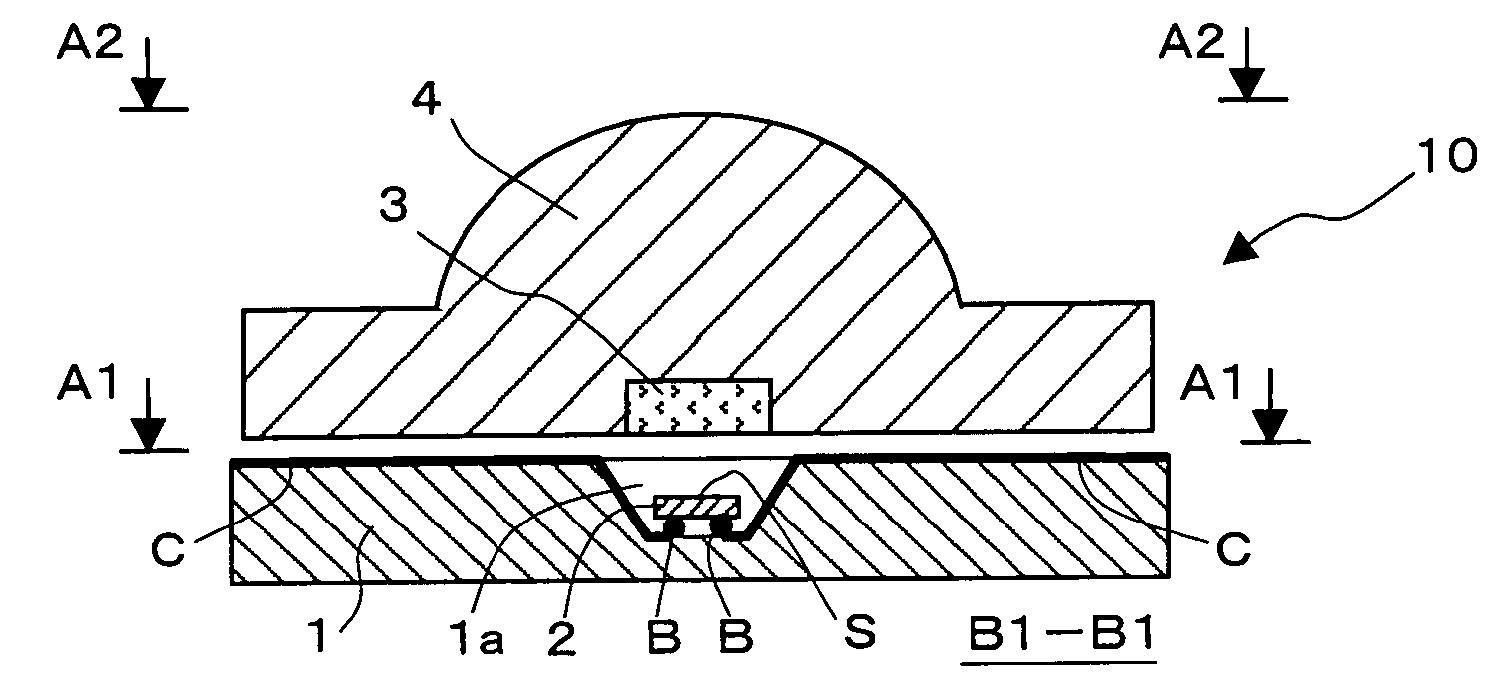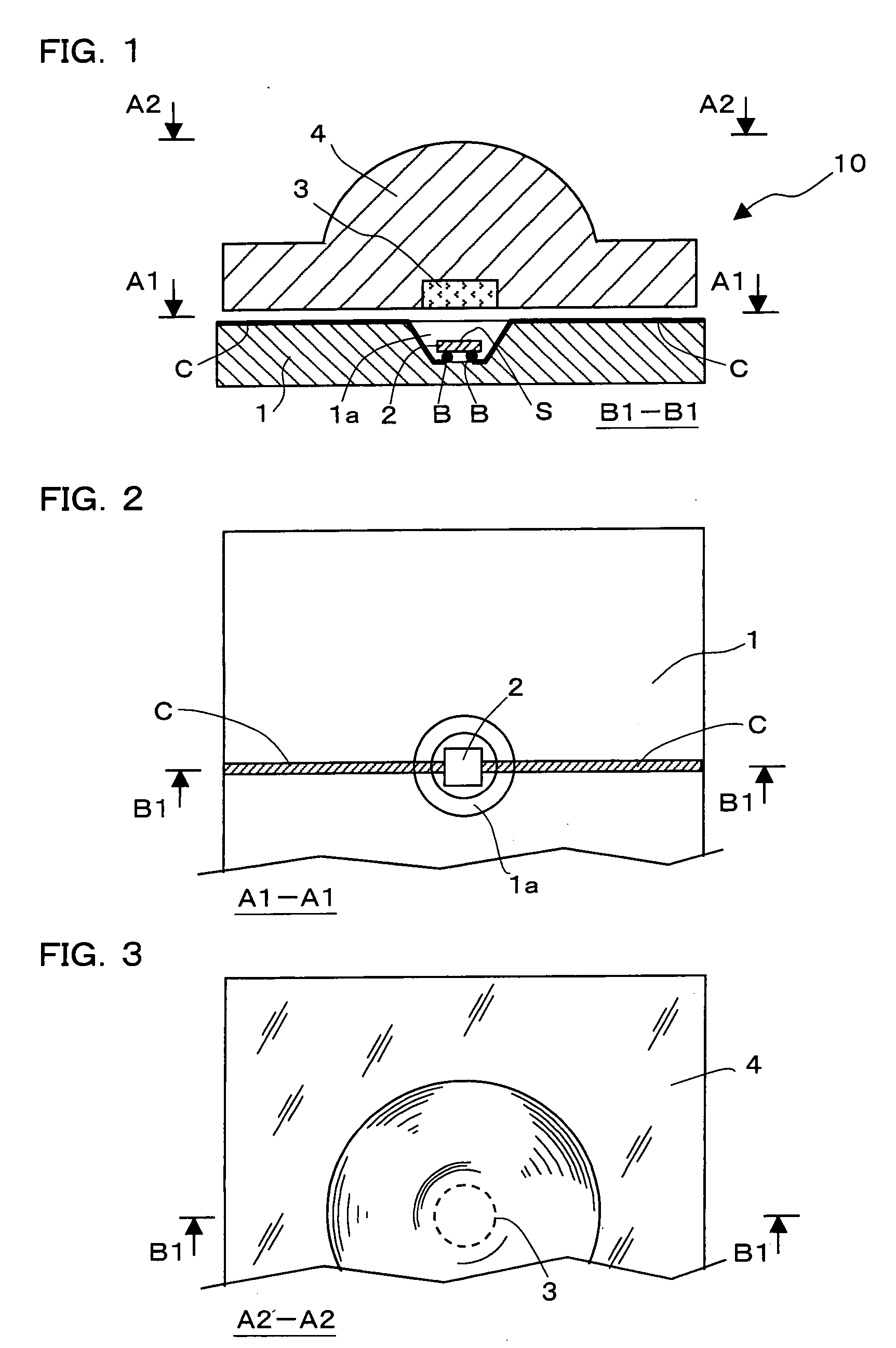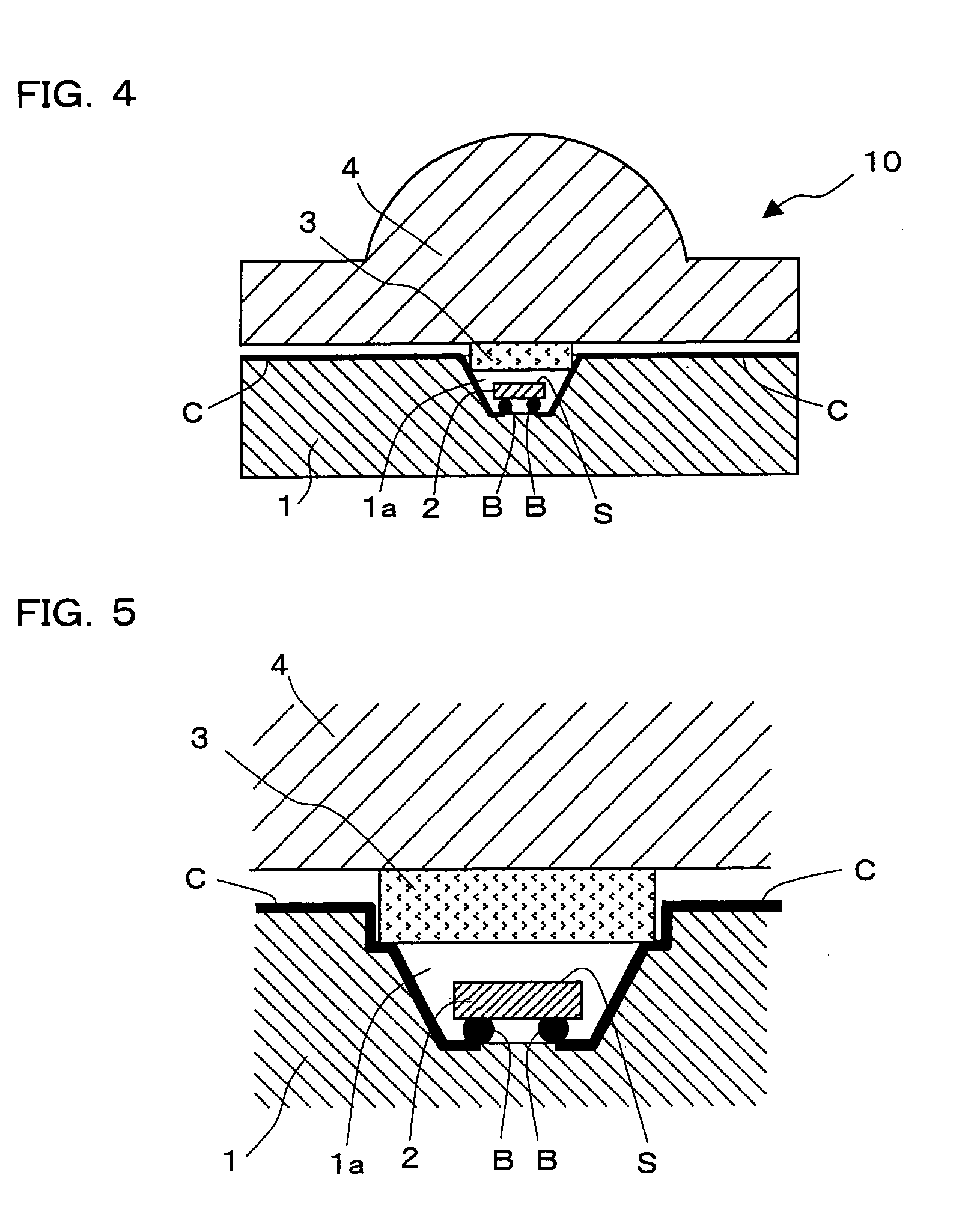Light emitting device using led
a technology of light-emitting devices and led light-emitting elements, which is applied in the direction of semiconductor devices for light sources, discharge tubes luminescnet screens, lighting and heating apparatus, etc., can solve the problems of ineffective light-emitting, inability to efficiently apply light, and material or resin tend to quickly deteriorate, so as to prolong the service life of light-emitting devices and improve the heat-emitting property of light-emitting elements. , the effect o
- Summary
- Abstract
- Description
- Claims
- Application Information
AI Technical Summary
Benefits of technology
Problems solved by technology
Method used
Image
Examples
embodiment 1
[0061] Referring to FIGS. 1 through 3, the following description discusses embodiment 1 of the present invention. The light-emitting device 10 of the present embodiment is provided with a light-emitting element 2 which is placed on a bottom surface of a concave section 1a that has a reversed cone shape with a trapezoidal shape in its cross-section and is formed on one surface of a flat-plate-shaped packaging substrate 1, an optical member 4 having a flat surface that is aligned face to face with the surface of the packaging substrate 1 on which this light-emitting element 2 is placed, and a disc-shaped fluorescent member 3 that is embedded in a concave section formed in the center portion of the surface belonging with the optical member 4 and facing the packaging substrate 1 so as to be flush with the above-mentioned surface of the optical member 4. The light-emitting element 2 is a blue-light-emitting LED, and is mounted with its face down, and the electrode patterns of the light-e...
embodiment 2
[0068] Referring to FIG. 4 and FIG. 5, the following description discusses embodiment 2 of the present invention. A step portion is formed on the upper portion of the opening of the concave section 1a in the packaging substrate, which is formed as a section in which the light-emitting element 2 is placed, and the fluorescent member 3 is fitted and detachably attached to this step portion. With this arrangement, only the fluorescent member that tends to deteriorate faster in comparison with other parts can be exchanged so that it becomes possible to further lengthen the service life of the light-emitting device.
embodiment 3
[0069] Referring to FIG. 6 and FIG. 7, the following description discusses embodiment 3 of the present invention. In the light-emitting device of the present embodiment, as shown in FIG. 6, the optical member 4 has a convex lens shape formed into a shell shape. With this optical shape, light a1, emitted from the fluorescent member 3, is formed into light a2 that is refracted so as to be converged in the center direction of the light-emitting device 10, and aligned on the surface of the optical part 4.
[0070] Moreover, as shown in FIG. 7, in a light-emitting device 10 in which a plurality of light-emitting elements 2 are assembled on the packaging substrate with multi-lenses 4m that form respective convex lenses being placed as the optical members 4 with respect to the light-emitting elements 2, by using a plurality of the light-emitting elements 2, the device is capable of applying a more quantity of light outside the device. The optical member 4 having such a structure with multiple...
PUM
 Login to View More
Login to View More Abstract
Description
Claims
Application Information
 Login to View More
Login to View More - R&D
- Intellectual Property
- Life Sciences
- Materials
- Tech Scout
- Unparalleled Data Quality
- Higher Quality Content
- 60% Fewer Hallucinations
Browse by: Latest US Patents, China's latest patents, Technical Efficacy Thesaurus, Application Domain, Technology Topic, Popular Technical Reports.
© 2025 PatSnap. All rights reserved.Legal|Privacy policy|Modern Slavery Act Transparency Statement|Sitemap|About US| Contact US: help@patsnap.com



